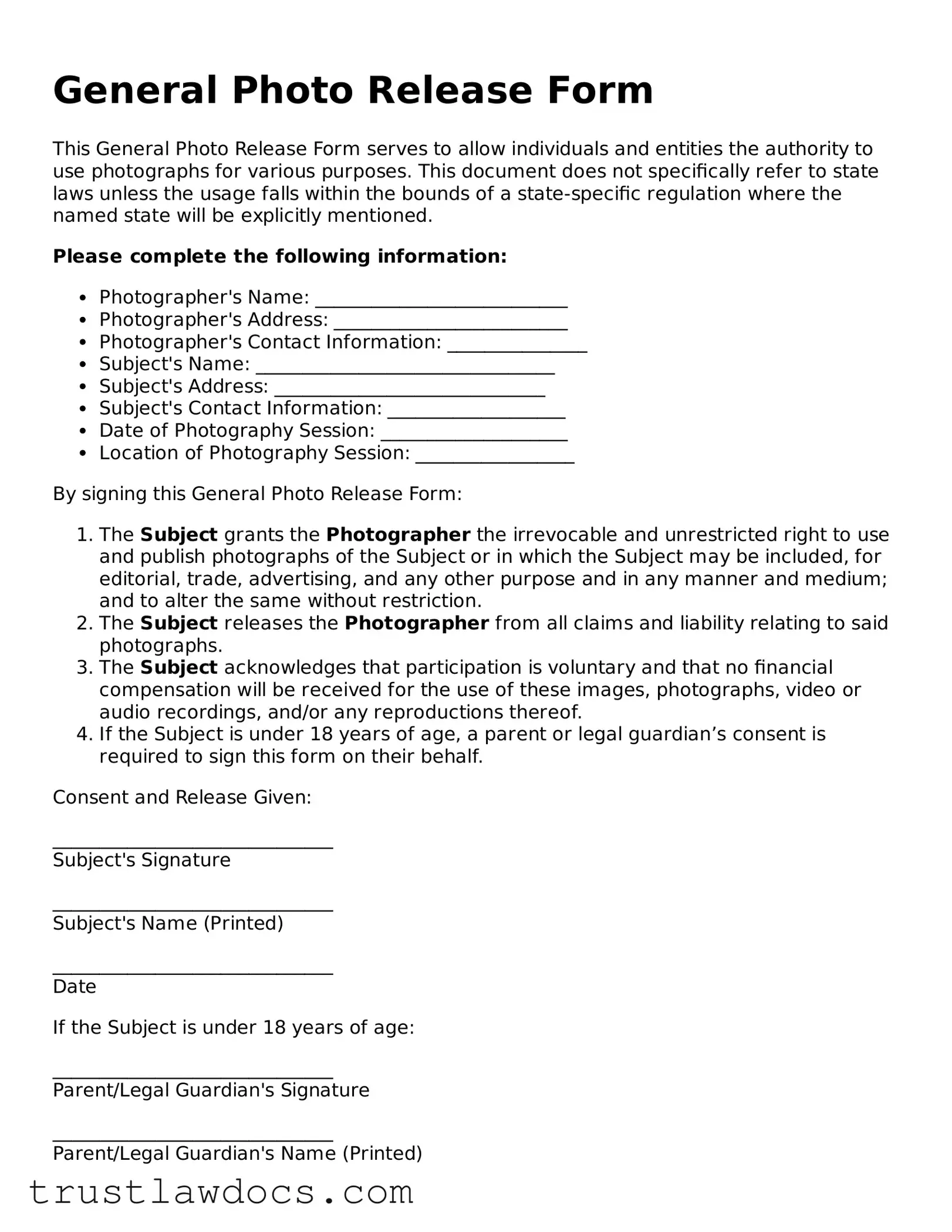What is a General Photo Release Form?
A General Photo Release Form is a document that grants permission to a photographer or any individual holding the rights to a photograph, to use, publish, or reproduce the image(s) of individuals captured in those photographs. It typically outlines the terms under which the photo may be used, including for commercial or personal purposes.
Who needs to sign a General Photo Release Form?
Individuals who are visibly recognizable in the photograph need to sign the General Photo Release Form. If the subject is a minor (under the age of 18), a parent or legal guardian must sign the form on their behalf.
Is a General Photo Release Form necessary for all types of photography?
While not always legally required, especially for personal use, it is highly recommended for commercial use of photos. This form is crucial when photographs are used for marketing, advertising, or other commercial purposes to avoid potential legal issues related to privacy rights or defamation.
Can a General Photo Release Form be revoked?
Yes, a General Photo Release Form can be revoked by the person who signed it. However, it typically requires a written notice of revocation. It's important to note that any use of the photographs that occurred before the revocation would usually not be affected.
What should be included in a General Photo Release Form?
The form should clearly identify the photographer or the individual who holds the rights to the photograph, the subject of the photograph (or their guardian if the subject is a minor), the specific photographs to which the release applies, and the scope of the permission granted. It should also have any compensation details, if applicable, and a statement regarding the revocation of the release.
Do digital photos also require a photo release form?
Yes, digital photos are treated the same as traditional film photographs under the law. If the images will be used for purposes beyond personal use, obtaining a signed General Photo Release Form is advisable to protect against legal challenges.
How long does a General Photo Release Form remain valid?
Unless otherwise specified in the form, a General Photo Release Form typically does not expire and remains valid indefinitely. It is a good practice, however, to review these forms periodically, especially if there is a change in the use or distribution of the photographs.
Is verbal consent adequate instead of a signed General Photo Release Form?
Verbal consent is generally not advisable because it can be difficult to prove if a dispute arises. A signed General Photo Release Form provides clear, written evidence of consent and outlines the terms of photo use, making it a safer choice for both parties involved.
Can photographs taken in public spaces be used without a release form?
In many cases, photographs taken in public spaces do not require a photo release for personal or editorial use. However, if the photograph is used for commercial purposes, a photo release is recommended to prevent privacy or likeness rights violations.
What happens if a photo is used without a signed General Photo Release Form?
Using a photo without a signed General Photo Release Form, especially for commercial purposes, can lead to legal challenges such as claims for violation of privacy or rights of publicity. It is always safer to obtain a release to mitigate any potential legal issues.
